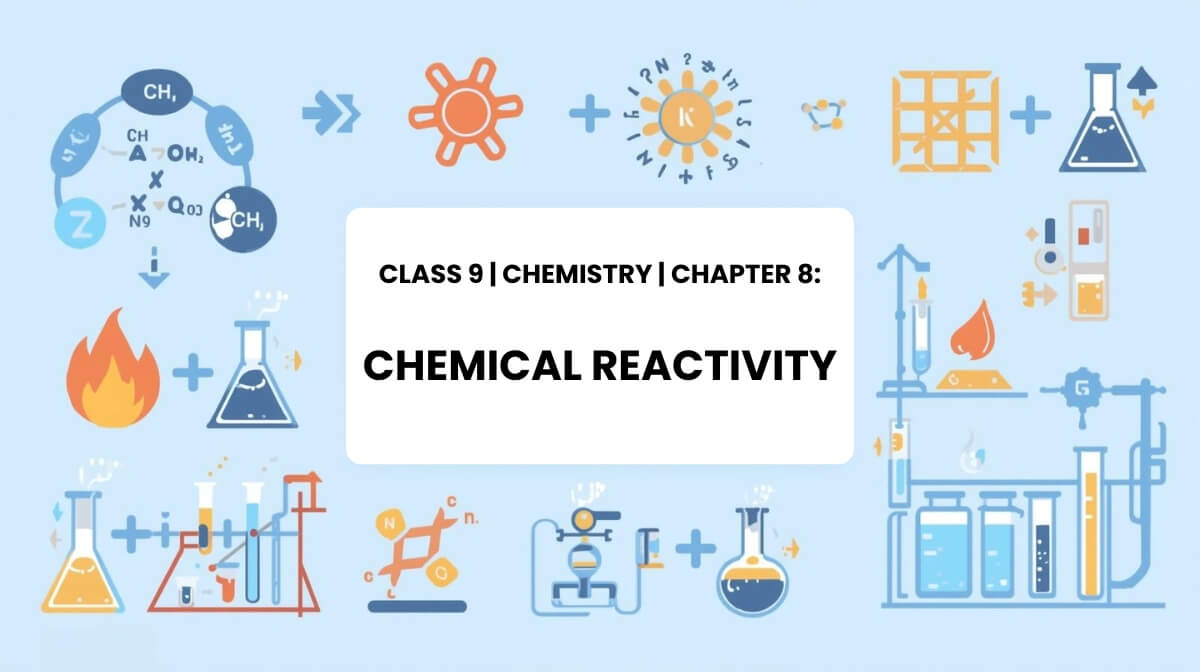Chemical Reactivity is the study of how and why substances react with one another. This chapter explains the factors that influence chemical reactions, such as reactivity series, nature of elements, and reaction conditions. It also covers displacement reactions, activity series of metals, and the role of reactivity in predicting product formation. The MCQs below will help students test their understanding of these important concepts.
1. What does the reactivity series of metals indicate?
- A. The order of atomic masses
- B. The order of metals based on their reactivity ✅
- C. The melting points of metals
- D. The density of metals
Explanation: The reactivity series arranges metals from most reactive to least reactive based on their chemical behavior.
2. Which metal is the most reactive in the reactivity series?
- A. Copper
- B. Zinc
- C. Potassium ✅
- D. Silver
Explanation: Potassium is highly reactive and reacts vigorously with water and oxygen.
3. What type of reaction occurs when a more reactive metal displaces a less reactive metal from its compound?
- A. Displacement reaction ✅
- B. Neutralization reaction
- C. Combination reaction
- D. Decomposition reaction
Explanation: In displacement reactions, a more reactive metal replaces a less reactive metal from its salt solution.
4. Which of the following metals will displace copper from copper sulfate solution?
- A. Zinc ✅
- B. Silver
- C. Gold
- D. Mercury
Explanation: Zinc is more reactive than copper and can displace it from copper sulfate solution.
5. Why does silver not react with dilute hydrochloric acid?
- A. Because it is a non-metal
- B. Because it is less reactive than hydrogen ✅
- C. Because it is insoluble
- D. Because it is unstable
Explanation: Metals less reactive than hydrogen cannot displace hydrogen from acids.
6. Which gas is produced when a reactive metal reacts with an acid?
- A. Oxygen
- B. Hydrogen ✅
- C. Carbon dioxide
- D. Nitrogen
Explanation: Reactive metals react with acids to produce hydrogen gas and a salt.
7. Which factor does NOT affect the chemical reactivity of metals?
- A. Position in the periodic table
- B. Electronic configuration
- C. Density ✅
- D. Reactivity series position
Explanation: Density is a physical property and does not directly determine reactivity.
8. Which metal is least reactive among the following?
- A. Magnesium
- B. Calcium
- C. Gold ✅
- D. Aluminium
Explanation: Gold is at the bottom of the reactivity series and does not corrode easily.
9. What is the main use of the reactivity series?
- A. To determine melting points
- B. To predict reaction feasibility ✅
- C. To calculate molar mass
- D. To determine hardness
Explanation: The reactivity series helps in predicting which metals can displace others in chemical reactions.
10. Why does potassium react explosively with water?
- A. Because it is a noble metal
- B. Because it is less dense than water
- C. Because it is highly reactive and releases heat rapidly ✅
- D. Because it dissolves completely
Explanation: Potassium reacts vigorously with water, producing hydrogen gas and heat, which ignites the hydrogen.

